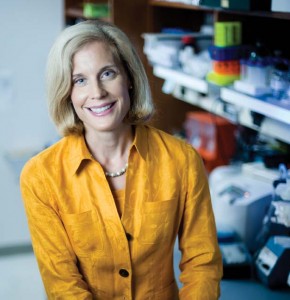Crucial Role of Surgeons in Cancer Treatment and Therapy
December 6, 2016 | Jennifer Pietenpol

Photo by Joe Howell
Stories in this issue of Momentum are stitched together with a common thread—the crucial role that surgeons play in cancer treatment and recovery.
It’s a role that can be overlooked. While the media spotlight focuses on emerging cancer treatments—immunotherapies that spur people’s immune systems to attack tumors, and targeted therapies that keep cancer cells from multiplying—the fact remains that surgery, the oldest cancer treatment, is very often the most effective one.
This issue includes articles on patients with testicular cancer, sarcoma, breast cancer, squamous cell carcinoma and metastatic pancreatic neuroendocrine cancer. Surgeons removed their tumors and helped patients rebuild their self-esteem.
Our cover story is about reconstructive surgeons who save cancer patients from facial disfigurement, reshape their bodies after mastectomies and preserve their limbs. Vanderbilt-Ingram Cancer Center (VICC) has specialty-trained surgeons working in multi-disciplinary teams with oncologists, pathologists, radiologists and other specialists who are among the nation’s best physicians. That’s what it takes to provide the care that merits a Comprehensive Cancer Center designation from the National Cancer Institute.
In this issue, we also showcase another older cancer treatment, one that has been around since 1899. Radiotherapy continues to be at the forefront of cancer research as doctors devise better ways to target tumors and use it in conjunction with immunotherapies.
The medical teams at VICC are dedicated to providing the best possible care to the patients they serve today and learning from each patient to provide improved treatment strategies for prevention, treatment and control of cancer for the patients they serve tomorrow. We have expanded our staff of patient navigators to meet the needs of our patients and to ensure that our patients are highly engaged in their care coordination and don’t feel lost in cases where multi-disciplinary team care is required. That is just one part of a new innovation explained in this issue to ensure that our patients receive the highest quality care at one of the nation’s very best cancer centers.
– Jennifer Pietenpol
